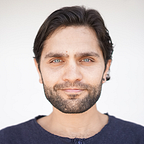How to minimize the side effects of your product?
As designers, engineers, and developers, we are all creators and this makes us responsible for every product or service in the market, all of which, in some way or another, have our fingerprints on. You may think we are the middlemen between our boss and consumer but that does not change the fact we have the power of judgement and are responsible for decision making for each product we create. It is therefore up to us to make things better or worse. Just like drugs that are consumed by people, each service or product that is designed by us comes with potential side effects, and while many of them will be minor, some can be serious or even fatal. Our design decisions are not always in people’s favour, however, we can at least endeavour to minimise the negative side effects of the products we create.
In recent years, we have witnessed multi-billion-dollar companies cause trouble for both themselves and the world by making terrible decisions. Just like Apple, ruining old iPhones’ performance through software updates “on purpose”. When Apple has admitted it has been slowing the performance of older iPhones to sell newer models, the company lost many loyal customers by betraying their trust (WIRED, 2017) and paid $500 million to settle a class-action lawsuit. Apple’s design decisions have not only caused problems for its users and the company itself but it also contributes immensely to the electronic waste which pollutes our world.
On the other hand, Elon Musk’s Tesla and his employees have taken a different, and sustainable approach, to making money. Instead of forcing their clients into a position where they have to buy a new car with each design and system advancement, Tesla encourages their clients to buy new updates as they make adaptations and improvements to the software technology of Tesla cars. This approach ultimately allows Tesla customers to have advanced self-driving features without the necessity of buying a new car (Forbes, 2019).
Small or big, many companies can potentially face the same destiny as Apple, Volkswagen, and Boeing, big names which ended up suffering for their unethical, manipulative and sometimes illegal product decisions which led to severe side effects on people and the environment (Jung and Park, 2017). Without a doubt, competition leads many companies into increased production capacity to hit bigger numbers trying to have a bigger market share and stay ahead of their competitors. After all, like it or not, our system has been evolved in a way where constant development is needed for companies to survive. Creating smarter and long-lasting solutions, using models such as “circular economy” appears to be the key to support all stakeholders and our environment in this aggressive chain.
Adidas is one of the best examples when it comes to the circular economy. The company sold one million shoes made out of ocean plastic in 2017, making a positive impact on consumers while supporting the environment. The company has also figured 65 to 75 % of younger consumers under the age of 35 prefer sustainable products. This encouraged Adidas to plan a shift to totally recycled polyester by 2024. Through this link, you can access a podcast about Adidas’ sustainability journey and the challenges they overcame.
3 key points to minimize the negative side effects of your product
1) Innovation never ends
Innovation is simply to replace existing services or products with more feasible, desirable, and viable solutions. If you want to improve the quality of your existing products and services, your business should act as a nexus between emerging technologies and consumers’ needs, enabling innovation.
2) Keep it ethical
Today, ethics are not just being discussed in classrooms. We encounter this subject more and more often both in our work and social life. People’s environmental and ethical awareness emerge and this makes them more conscious about the products or services they choose. Just like Adidas, those who include sustainable and ethical creativity in the innovation process will be the new winners.
3) Listen to your co-workers
Stop pretending like you are listening to your co-workers and actually try to hear them. Give them enough space for discussions and ask them clarification questions. The insights you get from them can prevent future problems. Identifying potential issues before they even appear can save you time and effort. As Sun Tzu says; “The greatest victory is that which requires no battle.”
Sharing is caring ❤. If you think this is an interesting read please share it with others. You can also connect or follow me on LinkedIn.
Bibliography
WIRED (2017). Apple Had Way Better Options Than Slowing Down Your iPhone. MCMAHON, J. Available at: https://www.wired.com/story/apple-iphone-battery-slow-down/ [Accessed 3 March 2020].
Forbes (2019). Tesla Has A Software Business And It’s Big!. Available at: <https://www.forbes.com/sites/greatspeculations/2019/09/13/tesla-has-a-software-business-and-its-big/#bdb98514d7c8> [Accessed 19 March 2020].
Jung, J. and Park, S. (2017) Case Study: Volkswagen’s Diesel Emissions Scandal. Thunderbird International Business Review, 59(1), pp.127–137.
